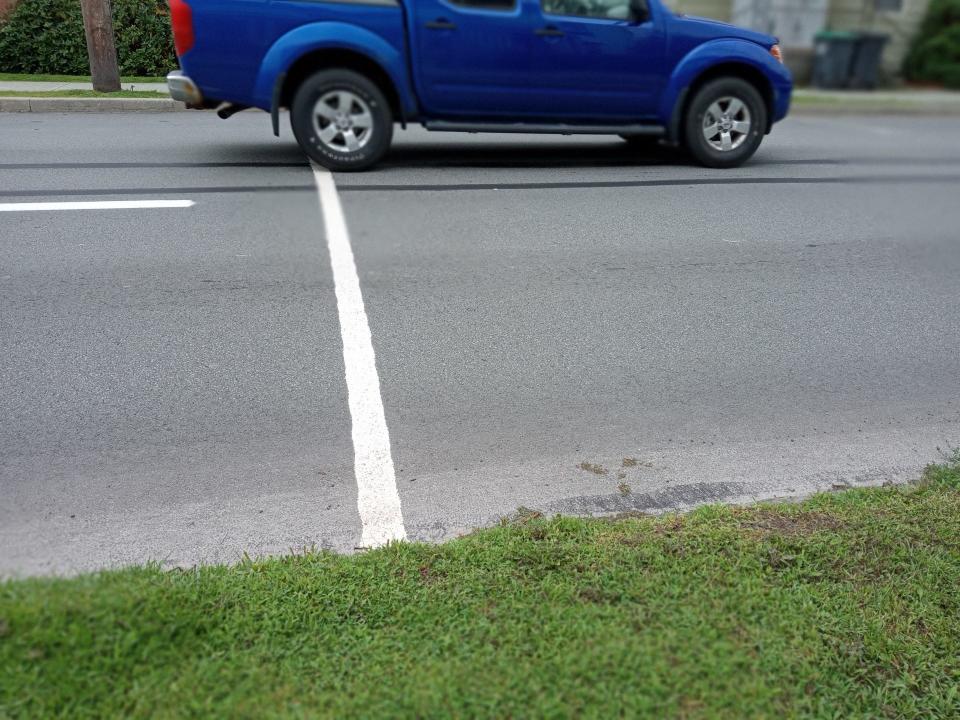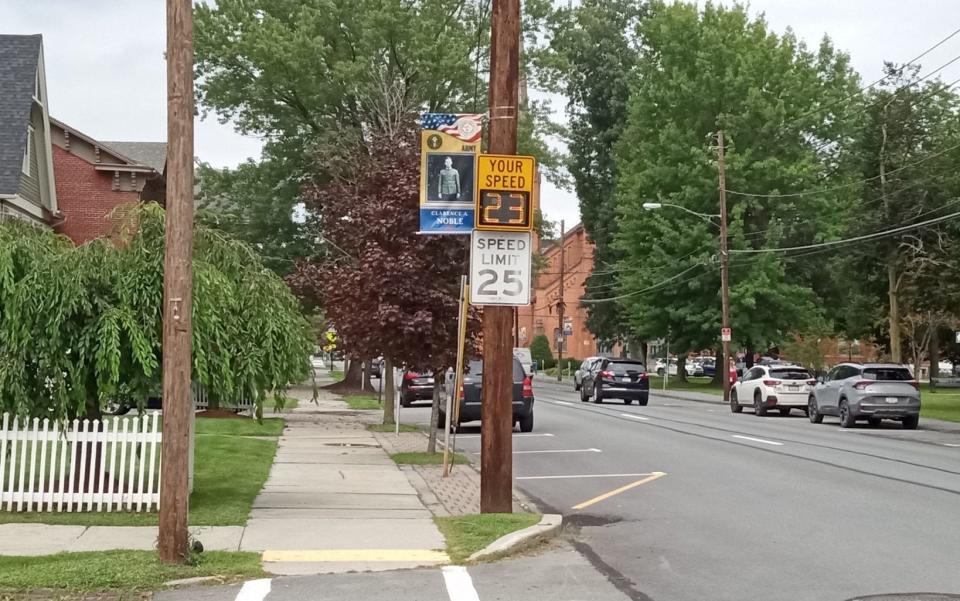Honesdale Council asks for speed enforcement data
Honesdale Council member James Hamill, at council's Aug. 21 meeting, asked Police Chief Richard Southerton if there was any data to show how well speed limit enforcement was doing on Main and Church streets.
Chief Southerton, as well as Council President Michael Augello, commented that there was not a great deal of excessive speeding. The chief also noted limitations on the method they have available to catch speeders.
Honesdale Borough Police use V-SPEC, an electronic device that measures time and distance to calculate speed. An officer must be stationed at one of two white lines painted across the street; a switch is flipped when a driver is seen crossing one line, and flipped again as the vehicle crosses the second line. They have two sets of these lines on Church Street, one near 4th and the other in the middle of the 800 block.
Southerton said he can provide the data for the next council meeting (Sept. 18), but commented on the limitations of using V-SPEC.
"The problem ... everybody knows we're there. They slow down because the [police] car has to sit there between the lines that are painted on the street," Southerton said. "They all know what we are doing."

He said what borough police really need is to be allowed to use radar. Pennsylvania law only allows State Police to use radar technology to enforce speed limits, although there have been legislative proposals to extend that tool to municipal police departments.
In an interview afterwards, Southerton said that they have V-SPEC in two of their cars, one being an unmarked vehicle, but he believes a lot of people figure it is a police car, parked there at one of the lines.
Southerton added that to enforce speeding using V-SPEC, the driver must have been driving at least 10 miles per hour over the limit, a "pretty substantial speed."
"I think most people are assuming they are speeding, and they are really not," he said. This extra 10 mph must be allowed because of the nature of the device, which is operated manually and therefore introduces a chance for human error.
Augello suggested setting up more electronic speed notification signs on Church and Main streets. "I don't see a lot of speeding, I really don't," Augello said. "I see most people driving in the 30-mph range." He said when drivers see the speed limit signs flashing, they slow down. Noting there is a lot of hearsay about speeding, Augello said they could use the actual data on speeding to know how bad the problem is.
The chief said in the interview that if the council were willing to pay for it, the police department could benefit from buying a device that is mounted on the street and can be relocated, which both records and reports driver speed automatically. That way, police and council would have the data to show when and where speeding is occurring most often. The two signs in use now just inform the driver and do not record anything.
Southerton said it is up to the council if they want to pay for more electronic speed notification signs. "I think you'll be surprised people aren't speeding as fast as you think they are," he said.

In the interview, the chief added that he too can guess some people are indeed speeding, but one cannot enforce speeding on a guess. When one-way traffic on Church and Main was instituted in 2009 there was a lot of concern from residents and council there would be a lot of speeding. Southerton said it was his opinion that there is speeding occurring, as drivers use the town as a through-way to the mall or other places, but there must be data to support it.
Councilor David Nilsen said though drivers slow down when seeing a police car sitting there, he added, "I thought that was kind of the idea. It is not about generating funds for the borough; it’s about making a safer environment for everyone."
The chief replied, "It only works when the car is sitting there. We have only 'X' number of officers."
Hamill stated, "In town, it has been a very long time that Honesdale has been — I am not pointing fingers — lax in enforcing speeding on Main Street and Church Street. I will drive [up] Church Street and watch the speedometer, it is at 25, people are passing me left and right... If we spend the time that we have, I know it is few officers... if we spend the time creating for people whether that are residents, employees of businesses in town or visitors that Honesdale is the place where you cannot speed because you will be pulled over..."
Southerton rejoined that they do use the lines for enforcement but with their limited number of police, they also must attend to their criminal case load. He said if the council wants the officers to sit and do speed enforcement, they will, and it is the council that pays the bills. He cautioned, however, that it is not so simple.
"It doesn't work the way you think it works," Southerton continued. He invited the council to come and watch as people slow down at seeing the lines and then speed up again.
"I understand that there is plenty of (police) work to do," Hamill replied. "I just think that it deserves the attention that we save a life."
In the interview, the chief said that since the council meeting his officers used V-SPEC over 10 days and observed approximately 1,000 vehicles, but not one was moving fast enough to issue a speeding ticket or even a warning.
Prior to having this kind of device, to catch speeders police would have to follow behind a vehicle watching the speedometer, which Southerton said is very labor-intensive.
Honesdale Police presently has three full-time and two part-time officers.
This article originally appeared on Tri-County Independent: Honesdale police chief: Less speeding than expected

